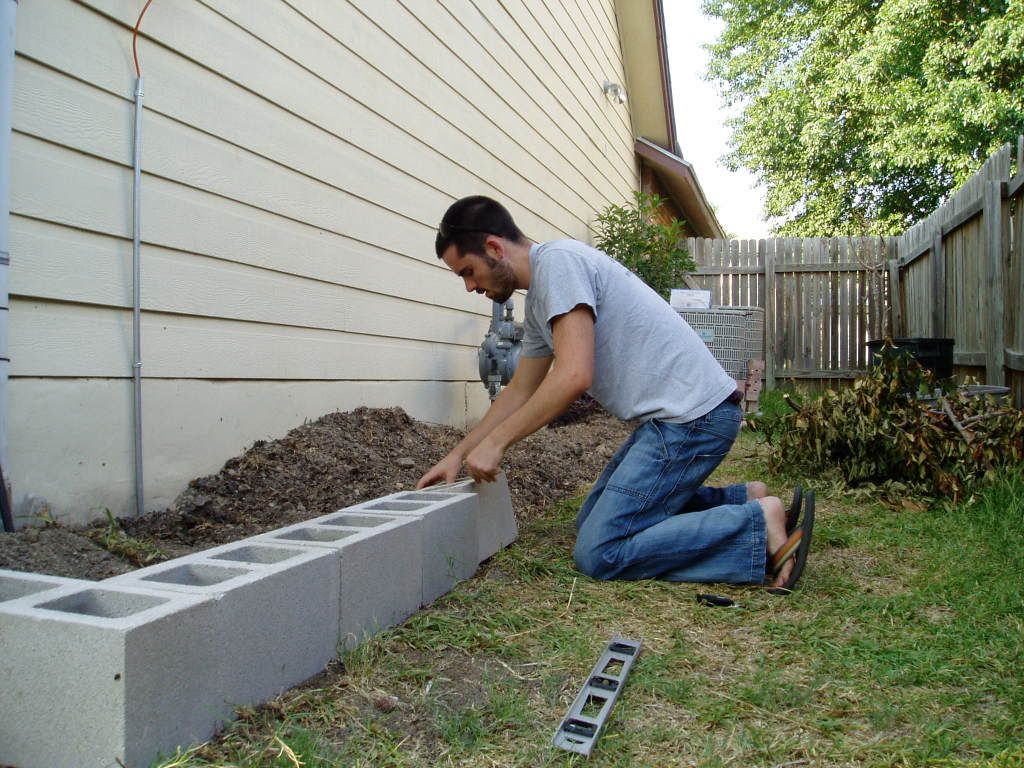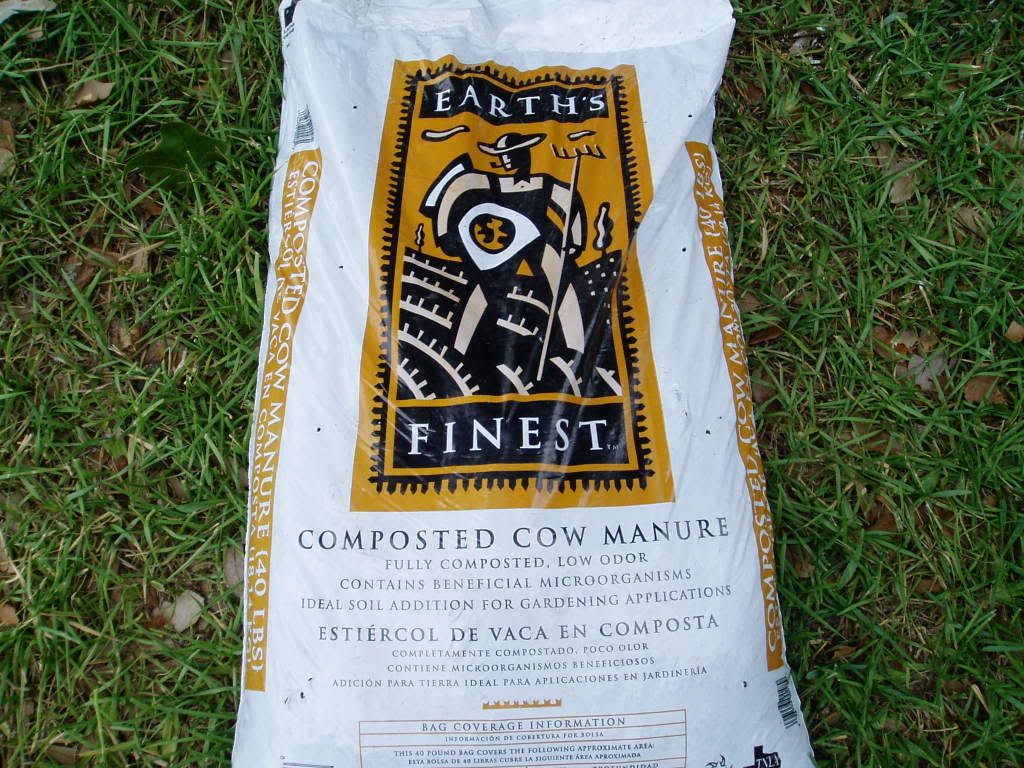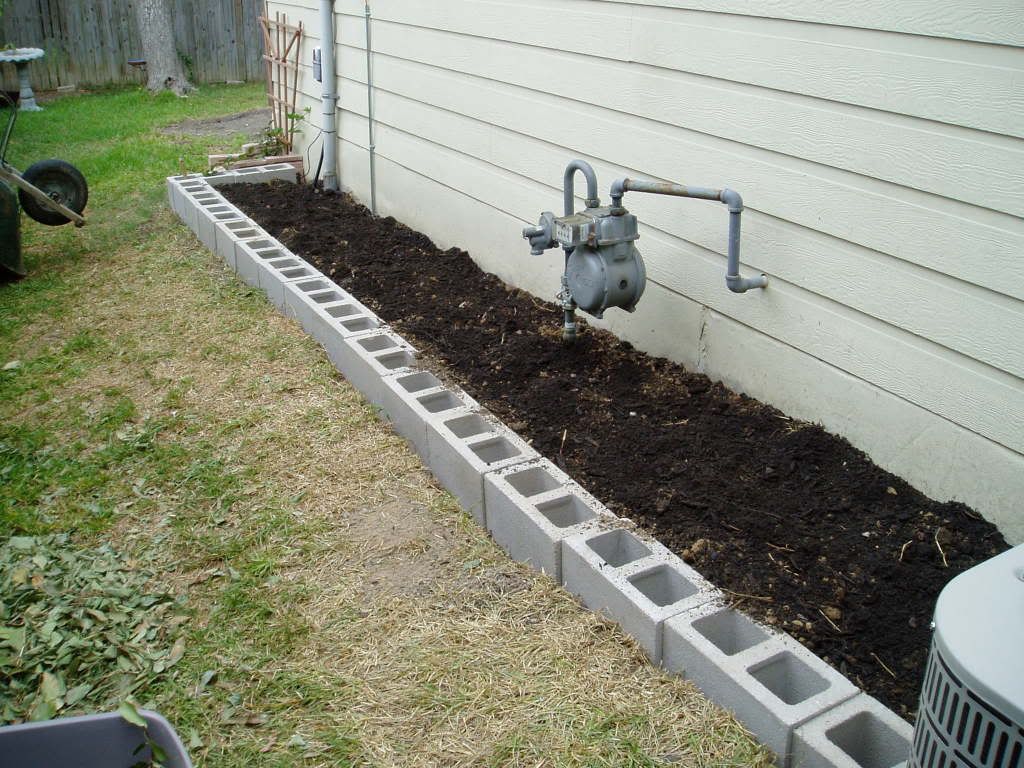Step 2: Raised Bed Gardening
Now that we have ruined a portion of our backyards, let's try and at least make it look somewhat decent. You can use long 2X12 boards of wood, you can go buy great looking (though expensive) quarry blocks, or (like me) you can use the concrete blocks your father-in law gave you. You want to be a good 12 inches off the ground when you are done.
Place them around your garden. The hardest part with this is getting them to be as close to level as possible (so use a level!). You will probably have to do some digging to get them to be perfect. If you use bricks I suggest placing them first, then go back and level them one at a time. This way you don't get to the end and realize everything needs to be moved an inch down to make the last brick fit (and yes, that happened to me yesterday). This takes more patience than muscle, and it helps to have a helper.
I'm a gardener, not a bricklayer!
After you get the perimeter built for your raised bed we need to fill it the rest of the way with more dirt and compost. You can go to any place that sells dirt and tell them you need something for a vegetable garden. Make sure the dirt they sell you has good drainage (it looks a little sandy). I suggest Fertile Garden Supply here in S.A. You will need a truck. Spread the dirt in your garden evenly.
Now you will need to add compost, which adds all the nutrients and micro-organisms your veggie garden needs to get started. You can put your own compost in if you have been composting, or you can go buy some to get you started. I suggest bags of composted cow manure, which can be bought at Lowe's for $1.33 for a 40 pound bag. It has already been composted and does not stink at all. You want to get plenty, because this stuff is good for everything. Pour the compost in your garden and work it into the soil lightly with a hoe or a rake. Keep adding compost until the top layer of your garden is a rich, dark color.
Cow Poop: The Secret Ingredient
This final step is optional, but highly recommended. Buy some Medina Soil Activator, which can be found at Lowe's. It contains trace minerals and other things that really help the beneficial micro-organisms in your newly made garden. These little guys do everything from loosening the soil to breaking down nutrients for plants. There can be nearly 3 billion of them in a single gram of soil. Some of them will even form colonies on the roots and start a symbiotic relationship with your plants, adding rich nitrogen and other macro-nutrients to them. Also, the more good micro-organisms you have, the less of a chance the bad ones have to set up shop. You can read more about these fascinating little guys here: Soil Life.
This raised bed is ready for fall!
Allow a couple of days for the dirt to settle some and then you are ready for planting!



1 comment:
Garden's looking good, but you might want to put some gloves on working with those cinderblocks. Your patients might not like those manly callouses. Ha!
Post a Comment